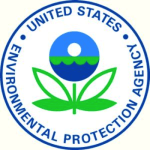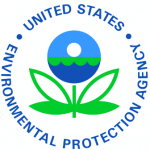Venting approved for new refrigerants, except R-32
March 2, 2015, WASHINGTON – As part of President Obama’s Climate Action Plan, the U.S. Environmental Protection Agency (EPA) is increasing the options for refrigerants used in various kinds of refrigeration and air conditioning equipment in the United States that offer better climate protection without harming the ozone layer. This final action addresses refrigerants under the Climate Action Plan that calls on EPA’s Significant New Alternatives Policy (SNAP) Program to identify and approve additional climate-friendly chemicals.

“Today’s rule is an example of how we can turn the challenge of climate change into an opportunity to innovate our way to a better future,” said EPA Administrator Gina McCarthy. “By working together, businesses and EPA are bringing new, climate-friendly refrigerants to market that better protect our health and the environment.”
Under the authority of the Clean Air Act, EPA’s SNAP Program evaluates substitute chemicals and technologies that are safe for the ozone layer. This final rule expands the list of SNAP-approved substitutes to include more low-global warming potential (GWP) alternatives that can replace both the ozone-depleting substances and high-GWP hydrofluorocarbons (HFCs). The approved substitutes have GWPs that range from 3 to 675 and can replace older compounds with GWPs between 1400 to 4000.
After receiving input from industry, environmental groups, and others, EPA is approving additional low-GWP hydrocarbon refrigerants, subject to use conditions, in the following refrigeration and air conditioning applications:
* Ethane in very low temperature refrigeration and in non-mechanical heat transfer;
* Isobutane in retail food refrigeration (stand-alone commercial refrigerators and freezers) and in vending machines;
* Propane in household refrigerators, freezers, or combination refrigerators and freezers, in vending machines, and in room air conditioning units;
* The hydrocarbon blend R-441A in retail food refrigeration (stand-alone commercial refrigerators and freezers), in vending machines and in room air conditioning units; and
* HFC-32 (difluoromethane) in room air conditioning units. HFC-32 has one-third the GWP of the conventional refrigerants currently being used in room air conditioning units.
These refrigerants are already in use in many of these applications in Europe and Asia.
In addition to adding these climate-friendly alternatives, EPA is also exempting all of these substances, except HFC-32, from the Clean Air Act venting prohibition, as current evidence suggests that their venting, release, or disposal does not pose a threat to the environment.
Learn more about EPA’s SNAP Program and this rule:http://www.epa.gov/ozone/snap/index.html




